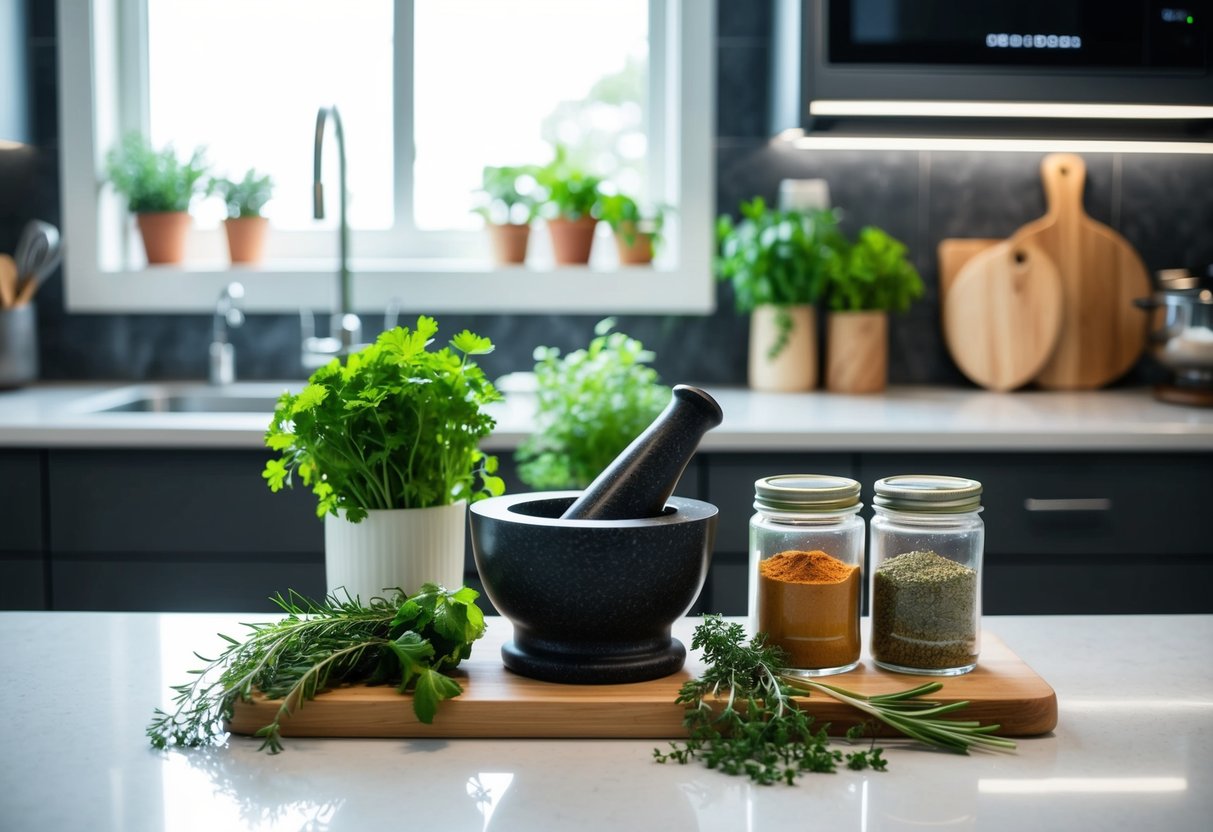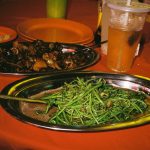Mastering the Art of Cooking with Herbs: Transform Your Dishes Instantly
Roasting With Herbs
Roasting enhances the natural sweetness and deep flavors of ingredients. Herbs, particularly those with woodier stems like rosemary and sage, stand up well to the high heat of this method. When roasting, it is effective to coat vegetables or proteins with olive oil mixed with chopped herbs. This forms a herb-crusted layer that crisps as it cooks.
Additionally, herbs can be tucked into slits in meats to infuse flavors directly into the flesh. This method works well with large roasts, where herbs and seasonings penetrate deeper, ensuring an evenly distributed taste. The use of herbs in roasting not only adds aromatic qualities but also provides a visually appealing finish to dishes.
Searing With Herbs
Searing quickly cooks the surface of food over high heat, creating a flavorful crust. Infusing this process with herbs is pivotal for adding depth and aroma in a short amount of time. Herbs like thyme, oregano, or marjoram can be sprinkled over meats or vegetables just before searing.
For a more intense herb flavor, placing fresh sprigs directly into the pan allows them to release their essence when heated. The herbs can char slightly, adding a smoky note to the dish. Combining oils like garlic-infused olive oil with herbs increases the aromatic profile, turning a simple sear into an unforgettable taste experience. Passing aromas fill the kitchen, heralding the beginnings of a meal full of promise and flavor.
Creating Signature Herb Blends

Signature herb blends add uniqueness and flair to any dish. They offer the opportunity to tailor flavors precisely to individual tastes or specific recipes. By differentiating between dry and fresh herbs, and mastering the art of crafting blends, one can transform culinary creations.
Dry vs. Fresh Herb Mixes
Dry and fresh herbs each bring distinct elements to a mix, influencing flavor profiles and preservation methods. Dry herbs often have a concentrated taste due to moisture loss. This makes them ideal for long-cooking dishes like stews and soups, where their flavors can fully infuse.
Fresh herbs, on the other hand, provide a vibrant and sometimes delicate flavor. They are perfect for finishing a dish or in recipes where immediate consumption maximizes their aromatic qualities. Knowing when to use dry or fresh herbs is crucial for developing effective blends. Preservation also differs; dry herbs last longer but may require more for the desired intensity compared to fresh herbs.
Crafting the Perfect Blend
Crafting a signature blend demands an understanding of both individual herbs and their collective synergy. Begin by selecting a base herb that matches the dish’s main flavor profile. Add complementary herbs that enhance the base without overpowering it.
Consider ratios carefully to maintain balance. A blend for Italian cuisine might consist of basil, oregano, and thyme. An Asian-inspired mix might use cilantro, mint, and a touch of lemongrass. Spices like cumin or coriander can add depth and should be used thoughtfully. In crafting these blends, it’s about enhancing the natural tastes of the recipe, highlighting each element without overshadowing others.



